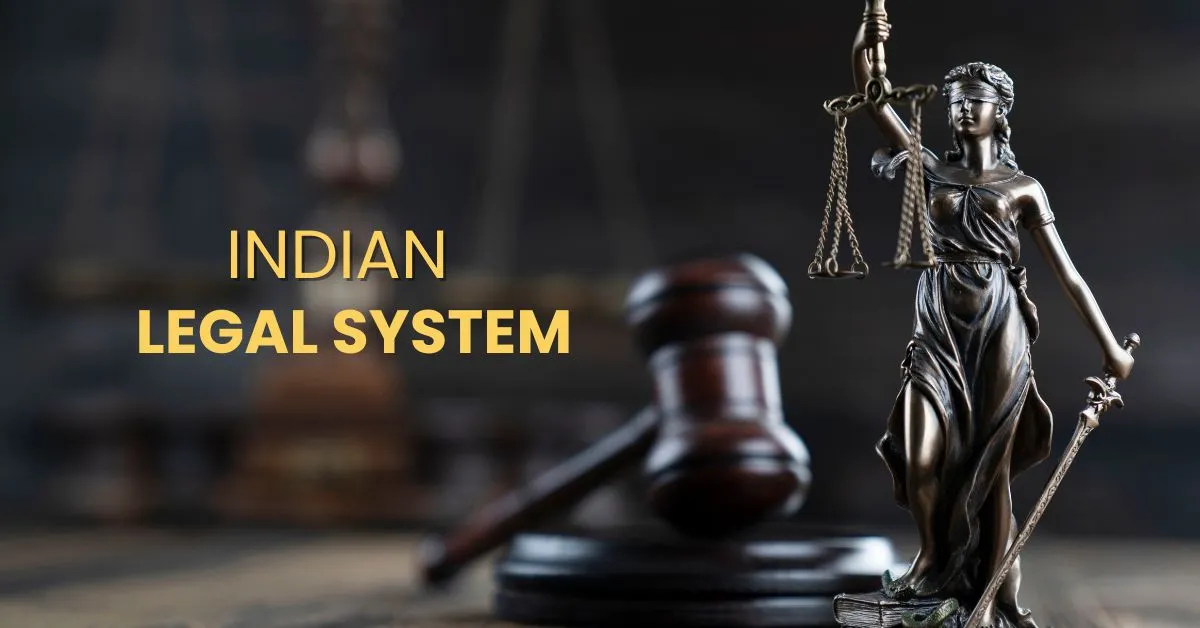The Legal System in India / Historical Evolution / Structure / Sources / Challenges and Reforms !

- Admin 21
- 24 May, 2024

Email:-adminKFY89@gmail.com
Instagram:-


The Legal System in India: An Overview
India's legal system is one of the most intricate and historically rich in the world. It is rooted in a combination of ancient traditions, colonial influences, and modern statutes. Understanding this system requires a look into its historical evolution, the structure of its judiciary, the sources of law, and the ongoing challenges and reforms.
Historical Evolution
The Indian legal system has a deep historical foundation, dating back to the Vedic period when customary law and religious texts governed societal conduct. The advent of Muslim rule in the medieval period introduced Islamic jurisprudence, which coexisted with Hindu law. However, the most significant transformation occurred during British colonial rule (1757-1947). The British established a comprehensive legal framework, introducing common law principles and codified laws which remain the cornerstone of Indian jurisprudence today.
Structure of the Judiciary
The judiciary in India is a three-tiered system comprising the Supreme Court at the apex, High Courts at the state level, and subordinate courts at the district and local levels.
1. Supreme Court: Established in 1950, the Supreme Court of India is the highest judicial authority. It has extensive powers, including original, appellate, and advisory jurisdiction. The Supreme Court not only resolves disputes but also interprets the Constitution, safeguarding fundamental rights.
2. High Courts: Each state has a High Court that serves as the highest judicial authority within the state. High Courts handle appeals from lower courts and have original jurisdiction over certain matters. They also supervise and control the functioning of subordinate courts.
3. Subordinate Courts: These include District Courts, which deal with civil and criminal cases at the district level, and various specialized courts such as Family Courts, Consumer Courts, and Labor Courts, which address specific types of disputes.
Sources of Law
The legal system in India draws from multiple sources:
1. The Constitution: The Constitution of India, adopted in 1950, is the supreme law of the land. It lays down the framework for governance, fundamental rights, duties of citizens, and the division of powers between the central and state governments.
2. Statutory Law: These are laws enacted by the Parliament and state legislatures. Statutory laws cover a wide range of areas including criminal law (e.g., Indian Penal Code), civil law (e.g., Contracts Act), and specialized sectors like environmental and corporate law.
3. Common Law: The Indian legal system heavily borrows from English common law due to its colonial history. Judicial precedents set by higher courts are binding on lower courts, ensuring consistency and stability in the legal system.
4. Personal Laws: India is unique in its incorporation of personal laws that govern family matters such as marriage, divorce, and inheritance. These laws differ for various religious communities, reflecting the country’s pluralistic society.
5. Customary Law: In some areas, customary laws still play a significant role, especially in rural regions and among tribal communities.
Contemporary Challenges and Reforms
Despite its robust structure, the Indian legal system faces several challenges:
1. Backlog of Cases: One of the most pressing issues is the enormous backlog of cases pending in courts. Delays in the legal process undermine the principle of timely justice and erode public confidence.
2. Judicial Vacancies: Many courts suffer from a shortage of judges, further exacerbating delays. Efforts to fill these vacancies and streamline the appointment process are ongoing.
3. Access to Justice: Access to justice remains uneven, with marginalized communities often facing significant barriers. Legal aid services and pro bono initiatives are crucial in bridging this gap.
4. Corruption: Allegations of corruption within the judiciary tarnish its image and effectiveness. Transparency and accountability measures are essential to uphold judicial integrity.
5. Judicial Reforms: Various reforms are being proposed and implemented to address these issues. The adoption of technology, such as e-courts and digital filing systems, is improving efficiency. Judicial training and the establishment of fast-track courts for specific types of cases are also steps in the right direction.
Conclusion
The Indian legal system, with its rich historical roots and complex structure, plays a pivotal role in maintaining the rule of law and upholding justice in a diverse and populous nation. While it faces significant challenges, ongoing reforms and innovations hold promise for a more efficient and accessible judicial system. As India continues to evolve, so too must its legal system, ensuring that it remains fair, robust, and capable of meeting the needs of its citizens in the 21st century.
#KFY #KFYNEWS #KHABARFORYOU #KFYBLOG
नवीनतम PODCAST सुनें, केवल The FM Yours पर
Click for more trending Khabar


Search
Category









.jpeg)